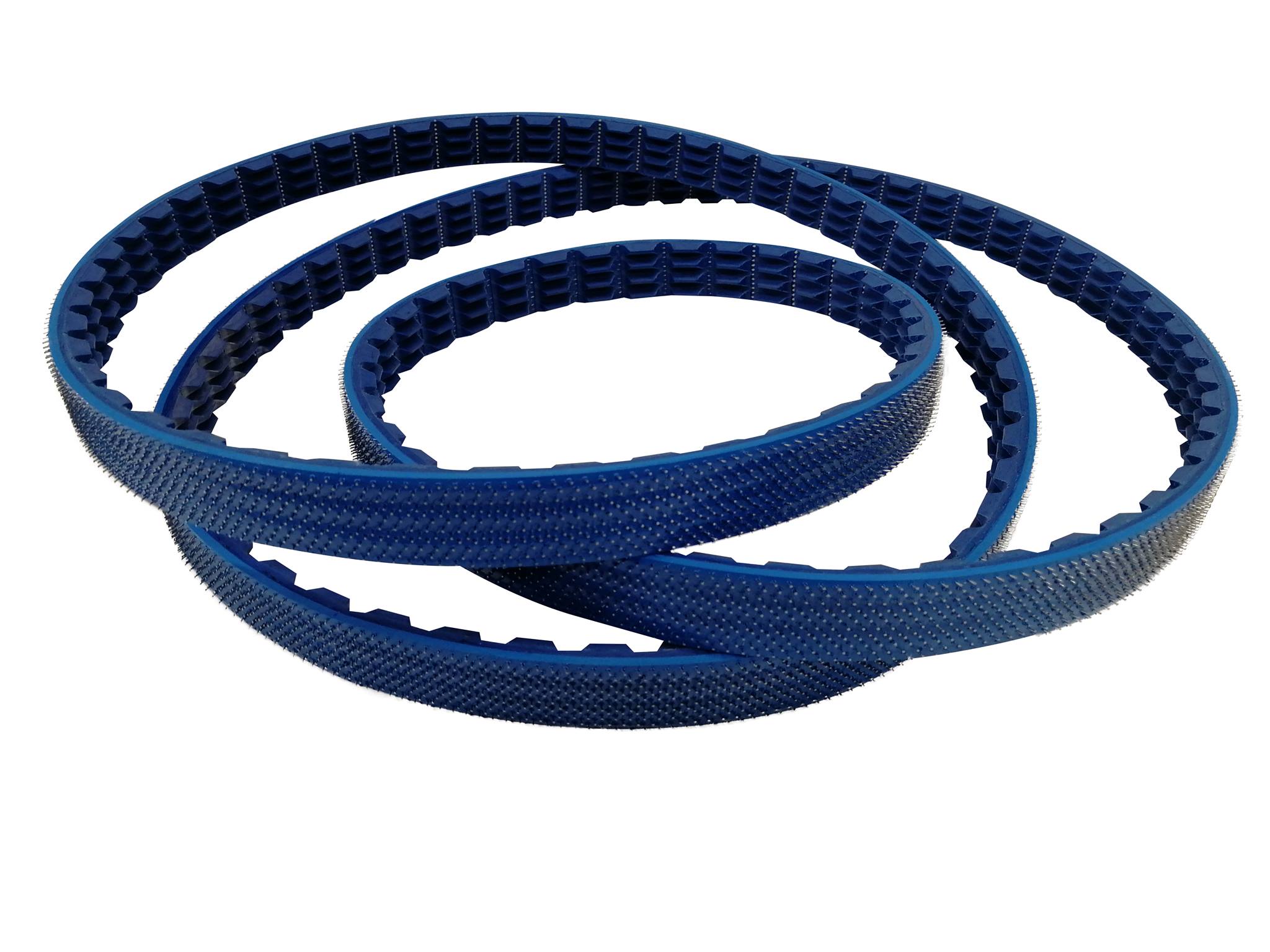Spare belts for Baader filleting machines
How perfectly tailored special belts developed by Aphabelt enable even gentler and more efficient filleting of herring and sardines

Spare belts for Baader filleting machines
Alphabelt develops perfectly tailored special belts for even gentler and more efficient filleting of herring and sardines
Fish is a high-quality food with a long tradition. In general, fish has a high content of protein and omega-3 fatty acids, which makes it particularly valuable. However, fish is sensitive and therefore places high demands on processing. The example of herring and sardines from the North Atlantic will be used to illustrate how fish can be processed in large quantities with the aid of automated workflows, which equipment is used for this purpose, and which belts have been specially developed in close cooperation with our customers to make the processing procedures even gentler and more efficient.
Sardine and herring - edible fish with sensitive texture
Sardine and herring are closely related, as they both belong to the genus Herring. They belong to the pelagic fishes, which means that they do not live near the bottom of the sea, but stay swimming in the open water. Since they usually occur in huge schools of several hundred thousand individual fish and have their preferred habitat near the coast, they can be targeted for fishing and already have a millennia-long tradition as food fish. Both sardine and herring offer a high content of unsaturated fatty acids, a tender texture and a mild, aromatic flavor. However, their delicate texture also makes them very sensitive to pressure, which must be taken into account during catching and further handling.
The difference between the two species is mainly in their size: while herrings usually measure between 30 and 40 cm, the Atlantic sardine usually grows to a maximum length of about 27 cm; however, smaller specimens are often preferred, only about the length of a finger. The size is subsequently also decisive for their further processing. Our customers in Morocco mainly rely on sardines from the coast of Northwest Africa, which are processed into canned products such as oil sardines. Since a tin can offers only limited space, the sardine with its slender shape and shorter length is ideal for this purpose. Our partners in Denmark, Norway and on the island of Ruegen, on the other hand, prefer the somewhat larger herring from the North and Baltic Seas, which is ideally suited for the production of matjes, rollmops, Bismarck herring, fried herring and many other specialties. By the way, in Germany alone, about 700 million herring are consumed per year.
How does the automated processing of herring and sardines take place?
Our customers include the largest fish processing center in Europe on the island of Ruegen. The work steps in this modern plant are used to illustrate the steps and challenges of automated processing.
The fish processing center offers herring trawlers from the North Sea and Baltic Sea the opportunity to land directly. Approximately 1,400 tons of fish or up to 7.5 million individual fish are not uncommon per trawler. Now speed is of the utmost importance: The fish is pumped from the trawlers' tanks directly to the factory via a pipeline and must be processed into the finished fillet within 15 minutes of arrival. In order to realize these very high processing capacities, several fully automatic processing lines are in use, which ensure perfect handling from a food technology and hygiene point of view.
The fish are first sorted by size using automatic belt systems. All fish must then be aligned in the same way for gutting and filleting. The direction of their scales determines the direction of movement on vibrating plates: Fish with the head first are conveyed further, fish with the tail first turn an extra round until they are lying the right way round. Once in the filleting machine, rotating blades first separate the head and tail, in the next step the guts are removed and finally the bones are cut out.
What machines are used and what challenges arise in connection with filleting?
A typical process line used by our customers for processing herring or sardines consists, among other things, of the main components sorting plant, small fish aligner and filleting machine. These are manufactured by Baader, a company based in Lübeck, Germany, which has been building machines for the fish industry for over 100 years and is now one of the leading manufacturers of food processing machinery and complete processing lines. In the field of fish processing, such a complete plant can include all work steps from raw fish sorting to packaging.
A particular challenge when filleting herring and sardines is their comparatively soft texture. The fatter the fish, the higher its quality in taste, but the more sensitive it is in handling. Despite the large quantities that are processed in a very short time and the resulting high speeds, it must be ruled out that the fish is crushed or torn in the plant. At the same time, however, exact alignment and precise transport through the machine are also necessary for millimeter-precise cutting during filleting.
Which belts have been specially developed for use in Baader filleting machines?
Over several years, Alphabelt developed special belts in close cooperation with well-known companies from the fish processing industry, which are specifically tailored to their needs and wishes. From our customers' point of view, the following points were particularly desirable for the new development: The belts should be easier to deflect compared to the original Baader belts and at the same time have a longer service life. In addition, the belts should ensure the highest precision in positioning the fish as well as the gentlest possible and damage-free transport of the sensitive products.
The jointly newly developed belts are poly-V belts with tension cords, which are provided with a coating of PU in FDA quality and additionally equipped with stainless steel bristles. The length of the bristles (up to 6 mm) as well as their orientation (vertical or slanted) can be chosen by our customers. Since the belts are used for fish of different sizes, two variants with different belt hardnesses are available: a harder one for larger fish and a softer one for smaller fish.
Alphabelt belts deliver best results on Baader filleting machines
The results of trial operation on our customers' plants were positive throughout: material selection and bristling of the newly developed belts guarantee safe passage of the fish through the filleting machines, gentle handling and thus a perfect fillet with smooth cuts. In addition, the deflectability of the belts has been improved and their service life considerably extended. Furthermore, the replacement belts are significantly cheaper compared to the original Baader belts: the cost savings here are around 50%.
Alphabelt belts for Baader herring and sardine filleting machines meet the most demanding requirements reliably and to the complete satisfaction of our customers. For operators of filleting machines as well as for reconditioners and suppliers of used machines, they represent an excellent alternative to conventional belts. We would also be pleased to support you in the selection or design of customized special belts for your project!

